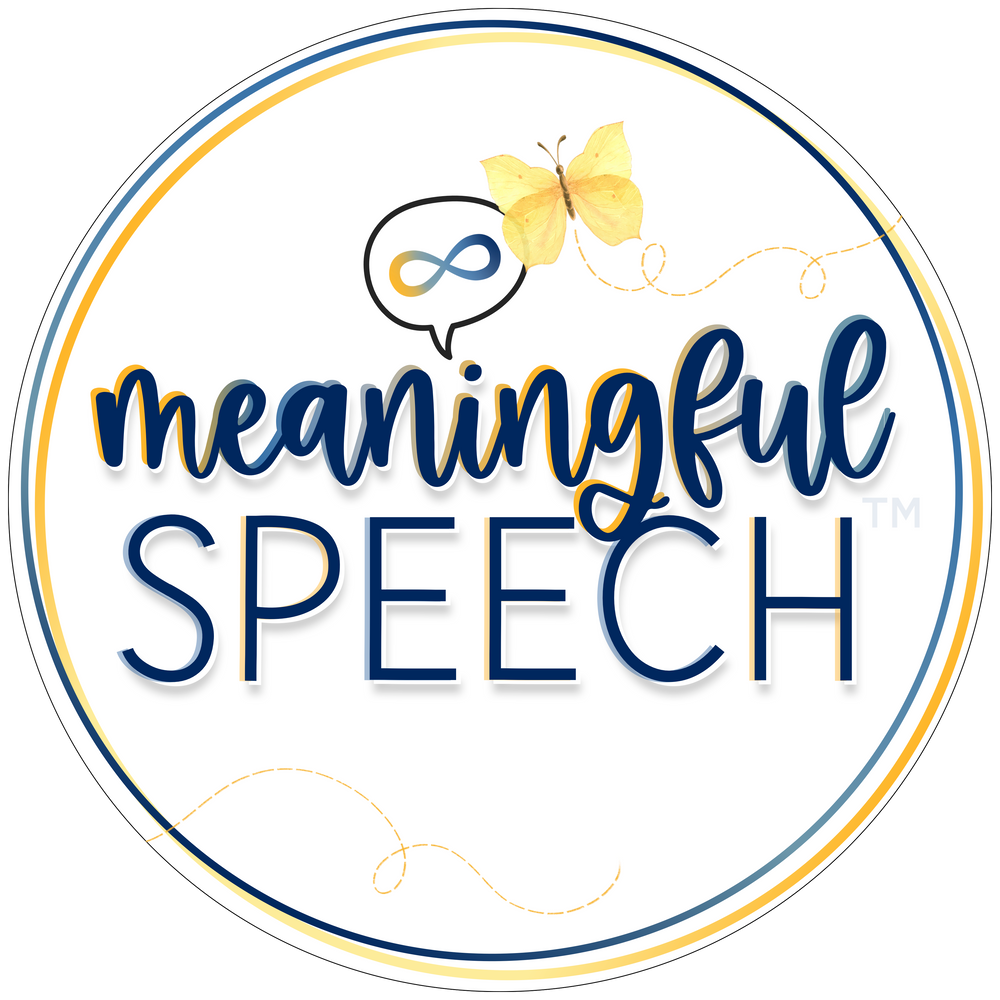Programming AAC Systems for Gestalt Language Processors: Addressing Misconceptions
Oct 29, 2025
October is AAC (Augmentative and Alternative Communication) Awareness month. As awareness of AAC and gestalt language development continues to increase, discussions around programming AAC systems for gestalt language processors have become increasingly important. At this time, existing systems are primarily designed with analytic language processors in mind. Let’s explore how to program AAC systems for gestalt language processors, address common misconceptions, and highlight best practices for effective communication support. If you’re unsure whether you should introduce AAC to your child or client that is a gestalt language processor check out this post HERE.
Common Misconceptions about AAC & Gestalt Language Processors
-
Phrase-Based Systems Are Not the Only Option: While systems like PODD or TD Snap are excellent for supporting gestalt language processing, they are not the only viable options. Many AAC systems can be adapted to meet the needs of gestalt language processors.
-
We do not replace core vocabulary: Some may think that core vocabulary should be minimized in AAC systems for gestalt language processors. In reality, users will eventually need these foundational single words as they progress in their language development (Stages 3+).
-
We are not sequencing one word at a time: For early stage gestalt language processors whose language is not flexible and who have not isolated single words as individual units of meaning, we do not want to sequence one word at a time. This method is effective for analytic language processors, but not for gestalt language processors. Instead, we want to program gestalts, potential gestalts keeping in mind how these will grow with the child through the stages (e.g. how they will mitigate them).
-
Deleting Gestalts Is Counterproductive: Once a user mitigates a gestalt or progresses to a later stage, there may be a tendency to remove those gestalts from the system. Please don’t remove them! Even gestalt language processors in Stage 4 and beyond may use gestalts for various reasons, whether due to preference or because they cannot access flexible language at that moment (sickness, fatigue, dysregulation, overwhelm, etc.).
What We Want to Do with AAC Systems for Gestalt Language Processors
To effectively support gestalt language processors, we need to program AAC systems with their developmental trajectory in mind. Here are key strategies:
- Organize for Growth: Create systems that can grow with the child as they progress through the stages of language development, ultimately leading to original and flexible language use.
- Incorporate Current Gestalts and Mitigations: Add gestalts they are currently using. Consider pop ups and hold features for stage 2 mitigations (not all apps have this capability).
- Personalize Potential Gestalts: We want to make sure the gestalts we’re adding into their device are individual to that child. We do not want to go with a standard set of gestalts for every child. Gestalts need to be meaningful to them. For example, adding parts of a movie clip that they have a gestalt from.
Features to look for in AAC Systems for Supporting Gestalt Language Processors
When selecting or programming AAC systems for gestalt language processors, certain features are especially beneficial:
- Video Linking and Recorded Speech Options: The ability to link and program videos and recorded speech makes the system more meaningful and engaging. Also, many gestalt language processors have difficulty processing the synthesized speech devices come with.
- Custom Scene Pages and Photos: Systems that enable the creation of custom scene pages or the addition of personal photos can help make it more individualized.
- Color-Coded Language Organization for users who reach Stage 4 and beyond.
Programming AAC systems for gestalt language processors requires an understanding of their unique language development, and of the child themself to ensure that it is set up in an individualized and meaningful way. By addressing misconceptions, we can create communication systems that not only support gestalt language processors in their current stage but also facilitate their growth toward flexible and original language use.
Want to learn more in-depth information about how to support gestalt language processors who use or may benefit from AAC?
- There are many free podcasts, webinars and articles to get you started. A comprehensive list of resources can also be found on our website. We have a free beginner's guide on AAC for Gestalt Language Processors. You can enroll in the class anytime here.
- Consider taking our AAC + Gestalt Language Processing course. It will teach you how to identify, evaluate and support gestalt language processors who use AAC or who you think might benefit from AAC.
- Look for a speech-language pathologist (SLP) who "gets it" and can help you in supporting your child's language development. Check out our registry for SLPs who understand gestalt language processing and child-led therapy.
